And for the next hurricane to head for our island… I give you Madeline. Not quite a hurricane yet, predicted to strengthen to a full hurricane over the weekend.
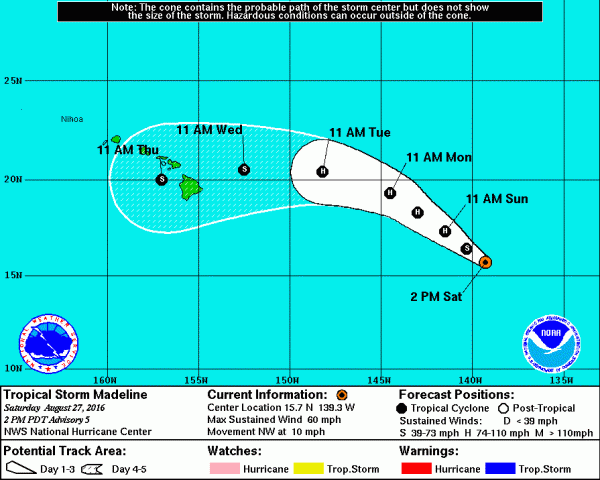
When you want to see the stars, find someplace dark
And for the next hurricane to head for our island… I give you Madeline. Not quite a hurricane yet, predicted to strengthen to a full hurricane over the weekend.

It was a rainbow sort of day.

After a spell of Kona weather the trades were back with a vengeance, blowing hard. This moved the Waimea mist wall halfway to Waikoloa. The result? Rainbows around every corner.
The first in sunrise light over the Kohala, the second in the mist as the sunlight pierced the low clouds near the airport, more of a fogbow actually. Another in the mist at Puhakuloa along Saddle Road, another on the summit road where heavier raindrops produced a brilliant bow. That was just the morning drive to work, the afternoon produced another set of rainbows for a total of seven, not counting the one I saw twice I as I drove into and out of Waimea.
Yeah, it was a rainbow sort of day.
On March 9, 2016 a total solar eclipse will sweep across Indonesia and into the central Pacific. This will be an late afternoon eclipse, with maximum occurring just before sunset at around 17:37 HST (5:37pm HST).

Note, you might be confused by some references that state the eclipse occurs on March 9th. It does occur on the 9th! For our islands greatest eclipse occurs around 03:30 on March 9th universal time. If we convert to Hawaiian Standard Time this will be the 17:30 (5:30pm) on the afternoon of March 8th. You must remember that universal time is ten hours ahead of Hawaiian Standard Time.
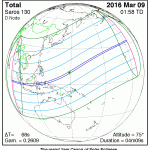
A deep partial can be very interesting. Even people not expecting the eclipse may notice a dimming of the Sun and an odd, subdued nature to the sunlight. Even a quick glimpse of the Sun will reveal that half of the disk is covered. Eclipse glasses or a welding filter will provide a nice image of a partially eclipsed Sun. Tree leaves and other makeshift pinhole cameras will show crescent images of the Sun on the ground. For best viewing a small telescope with a solar filter, or a pinhole camera will allow excellent images of the eclipse. My standard eclipse viewing setup is a 76mm refractor with a Baader film solar filter. I assembled this gear for the 2012 Venus transit and it has seen several eclipses since.
| Solar Eclipse Data for March 8th, 2016
|
||||
|---|---|---|---|---|
| Mag | Begin | Max | End | |
| Hilo | 55% | 16:37 | 17:37 | 18:32 |
| Honolulu | 63% | 16:33 | 17:36 | 18:33 |
| Lihue | 67% | 16:31 | 17:35 | 18:33 |
| Kahului | 60% | 16:35 | 17:37 | 18:33 |
| Kona | 56% | 16:36 | 17:37 | 18:32 |
| Mauna Kea | 56% | 16:37 | 17:37 | 18:32 |
| Midway Is | 97% | 16:04 | 17:20 | 18:29 |
| All times HST | ||||
| Source: EclipseWise Interactive Map | ||||
As you can see the magnitude of the eclipse increases notably the closer you are (further north in the main islands) to the path of totality. The timing does not vary by nearly as much, with maximum eclipse occurring around 17:36 for the islands.
If you would like to see precise information for your location, or for someplace other than the islands, just use the interactive map and click on your location for data.
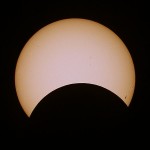
There are no further solar eclipses near the Hawaiian islands until 2031 and 2035, the path of totality for both of which pass well south of the main islands. There is also an annular eclipse in 2024, for which the center line also passes well south of the islands.
Mark is at is again, publishing a couple fun videos of diving the Kona Coast. As I have been off island for a couple weeks I have not been diving, watching the vids has reminded me all too vividly of that! Need to get some bottom time!
“We swam in the Queen’s Bath this weekend”
“Oh? Which one?”
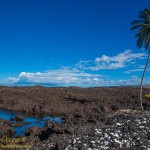
There is the well known lava tube at Kihilo just a pebble’s throw from the surf. Enter through a skylight into the crisp, cool water. Bring a dive light and swim all the way to the back of the tube. Careful, there are boulders waiting to scrape the shins of an unwary swimmer, reef shoes or river sandals are the ideal footwear here.
Another Queen’s bath is found on the grounds of the Kaloko-Honokōhau National Historic Park. The park requests that you refrain from swimming in this one.
There are any number of pools along the Kohala Coast, particularly the low-lying section from Puako to Kiholo bay where enormous amounts of fresh water find their way into the sea. These often have reef fish trapped within, perhaps washed in by the winter surf. Other species of fish prefer these pools, grazing on the algae growing in the shallow, warm water.
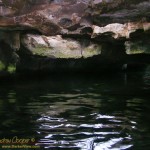
Some of these pools are brackish, the salt water mixing with fresh. The result is a swirling view through a dive mask with the mixed refractive indexes, looking a bit like mixing water and oil. As one swims away from the ocean the water becomes fresher, you often find startlingly cool currents where the fresh water enters the pool. Often the tides will affect the depth of the water in the pool, even pools a hundred yards from the ocean rising and falling as the tide backs up the flow of water.
Many of the pools are local secrets, directions not available to outsiders. Places where a hot afternoon can be enjoyed, swimming in the cool waters. I know a few of these, don’t ask me where to find them.
It is not a hurricane watch, but rather a tsunami watch that is currently in effect for the island. This afternoon’s 8.3 magnitude earthquake in Chile may have generated a tsunami that may arrive around 3am tomorrow morning. The early data from stations along the Chilean coast report a tsunami has indeed occurred of between ½m and 3m in height. Oh the fun of living in paradise…
Update: Tsunami watch downgraded to an advisory, minor effects expected.
The satellite views of the central Pacific are endlessly fascinating. Three major hurricanes surround the Hawaiian Islands. Social media continues to buzz, with re-posts of the imagery.
So far only minor effects in the islands… Major surf on the northern and eastern shorelines, closed beach parks, and lousy observing weather keeping the telescopes shuttered.
